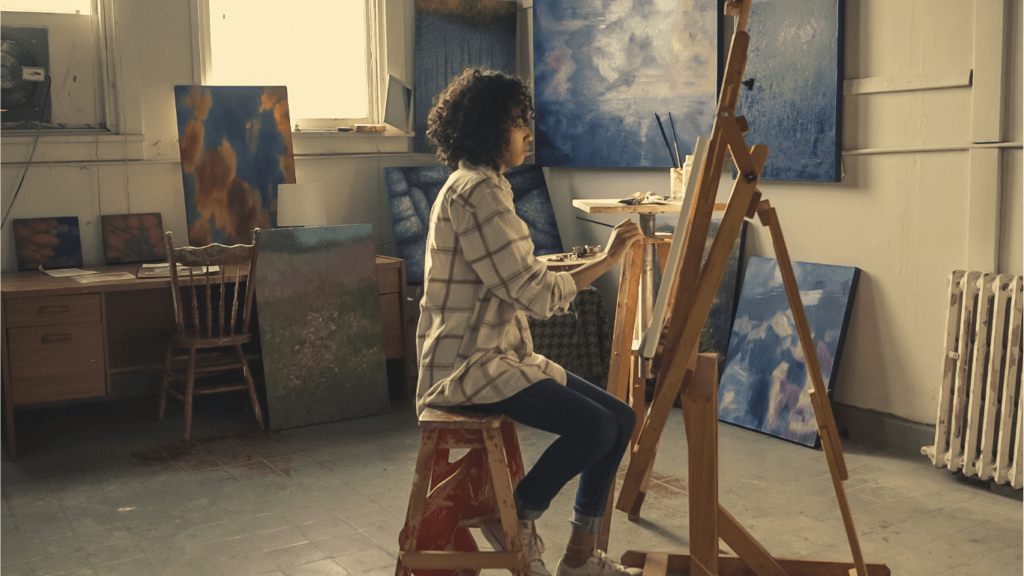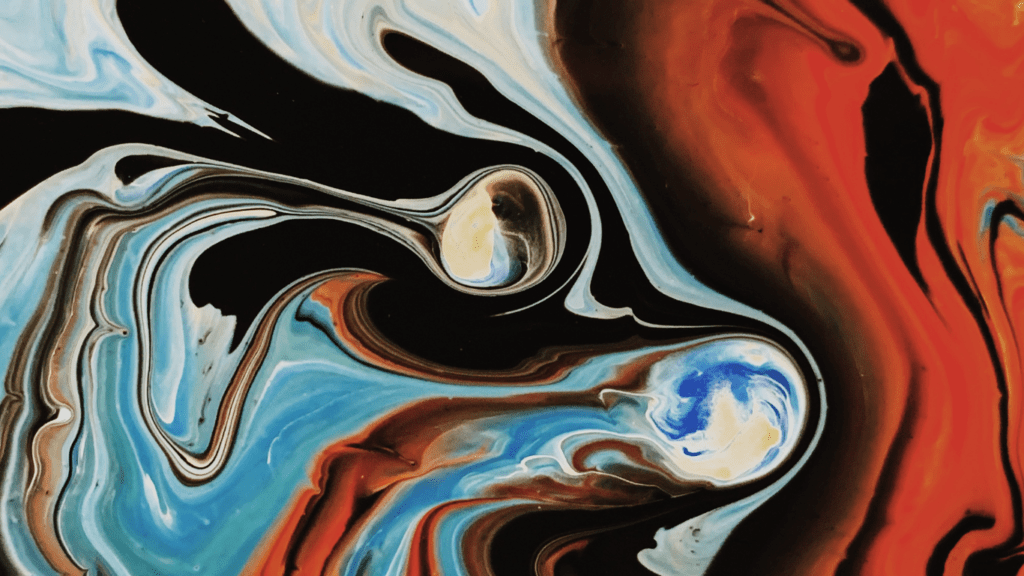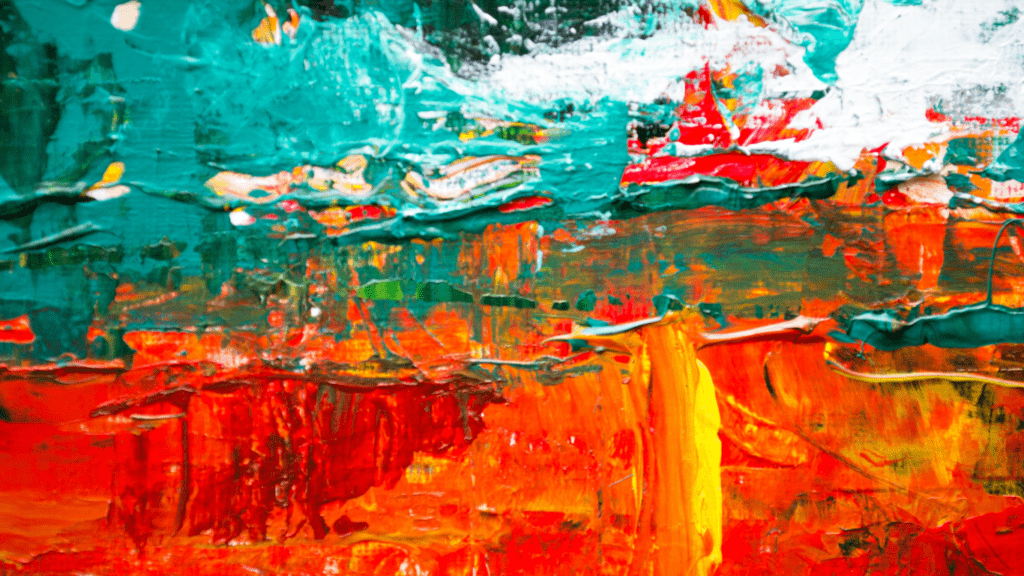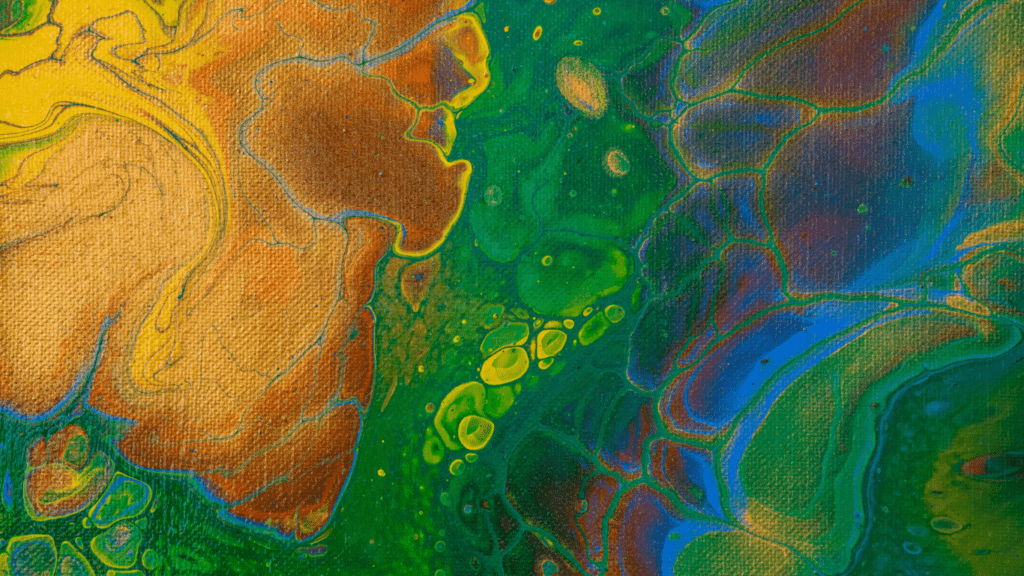Origins Of Abstract Expressionism
Abstract Expressionism began in the mid-20th century, emerging from a post-World War II backdrop that called for new means of artistic expression. The movement combined raw emotion and innovative techniques, redefining the art world.
Early Influences
Surrealism and German Expressionism heavily influenced Abstract Expressionism. Surrealist artists like André Breton, who explored unconscious mind concepts, paved the way for more abstract forms. German Expressionism’s emphasis on raw emotion and distorted forms also contributed. American artists found inspiration in these European movements, adapting elements to fit their narrative. Political turmoil and war added urgency, prompting a move towards personal freedom in artistic expression.
Key Artists And Works
Key artists like Jackson Pollock and Mark Rothko pushed the boundaries of conventional art. Pollock’s “drip” technique exemplified his innovative approach, as seen in works like “No. 5, 1948.” Rothko’s color field paintings, such as “Orange, Red, Yellow,” emphasized emotional depth through color and form. Other significant figures include Willem de Kooning, whose works like “Woman I” combined figuration and abstraction, and Barnett Newman, known for his “zip” paintings like “Vir Heroicus Sublimis.” Each artist contributed uniquely, shaping Abstract Expressionism’s identity and legacy.
Artistic Techniques And Styles
Abstract Expressionism is renowned for its innovative techniques and distinct styles. Two prominent styles that emerged within the movement are Action Painting and Color Field Painting.
Action Painting
Action Painting involves a dynamic and spontaneous approach to art creation. Artists like Jackson Pollock used this method to capture movement and energy directly on the canvas. Pollock’s famous “drip” technique involves dripping or pouring paint in a controlled manner but with an element of unpredictability. This method creates complex layers and textures, reflecting intense emotion and personal freedom. Other notable artists, such as Willem de Kooning, also employed vigorous brushstrokes to convey a sense of immediacy and raw power.
Color Field Painting
Color Field Painting focuses on large areas of a single color or simple compositions using multiple colors. Artists like Mark Rothko and Barnett Newman pioneered this style, using vibrant, saturated colors to evoke emotional responses. Rothko’s works often feature soft, rectangular forms with blurred edges, creating a meditative and immersive experience for viewers. By contrast, Newman’s paintings, marked by bold, vertical lines (zips), convey a sense of scale and transcendence. This style emphasizes the emotional impact of color, striving to engage viewers on a deeper, contemplative level.
Emotional Impact Of Abstract Expressionism

Abstract Expressionism evokes strong emotional responses due to its intense and non-representational forms. This section explores how viewers and psychologists interpret these artworks.
Viewer Reactions
Art enthusiasts often find Abstract Expressionism both intriguing and perplexing. Viewers typically engage with the art on an emotional level, interpreting the spontaneous brush strokes and vivid colors as direct expressions of the artists’ feelings. For example, many people see Jackson Pollock’s chaotic “drip” paintings as a manifestation of internal turmoil, while Mark Rothko’s expansive color fields invite contemplative reflection. These varying interpretations underscore the movement’s impact on individual perception and highlight its capacity to elicit profound emotional reactions.
Psychological Interpretations
- Psychologists analyze Abstract Expressionism to understand its emotional depth.
- They delve into the subconscious underpinnings of the artworks, considering how the lack of form and structure reflects the inner psyche’s chaos.
- Experts often reference Carl Jung’s theories of archetypes and the collective unconscious to explain the symbolism in these works.
- Barnett Newman’s use of vast, empty spaces in his paintings is seen as an exploration of existential angst and human isolation.
- These psychological insights reveal the intricate connection between the art’s abstract nature and the emotional experiences it seeks to convey.
Art Historical Context
Abstract Expressionism emerged in the mid-20th century, drawing influences from earlier art movements and responding to global events.
Comparisons With Other Movements
Comparing Abstract Expressionism with Surrealism, I notice both stress the unconscious mind. However, while Surrealism delves into dream-like fantasies and automatism, Abstract Expressionism focuses on spontaneous, expressive brush strokes. German Expressionism also impacted Abstract Expressionism by emphasizing intense emotional responses, yet differed by adopting more representational forms. Both movements sought to convey deeper feelings, but Abstract Expressionism embraced abstraction more fully. Cubism’s fragmented forms and diverse perspectives influenced artists as well, yet Abstract Expressionism departed from its analytical approach, instead opting for raw, emotional power.
Legacy And Influence
Abstract Expressionism’s legacy persists in contemporary art. Influencing movements like Minimalism and Neo-Expressionism, it pushed boundaries and redefined art’s purpose. Minimalism reacted by removing emotion, favoring simplicity, whereas Neo-Expressionism revived emotional intensity through bold colors and forms. Modern artists draw from Abstract Expressionism, exploring personal expression and emotional depth. Artistic techniques, like Pollock’s “drip painting” and Rothko’s color fields, revolutionized approaches to canvas and paint application. Abstract Expressionism’s emphasis on emotional interpretation and psychological impact remains relevant, affecting both art creators and viewers.
Contemporary Perspectives
Contemporary art critics and historians often examine Abstract Expressionism through new lenses, exploring its relevance and evolution in today’s art world.
Ongoing Debates
Critics and scholars continue to debate whether Abstract Expressionism prioritizes art or emotion. Many argue that the movement’s emphasis on personal expression, seen in Pollock’s chaotic splatters or Rothko’s brooding color fields, blurs the line between art and raw emotional output. Others suggest that the structured methodologies behind de Kooning’s figures or Newman’s minimalist forms signify a deep-rooted artistic technique. These divergent viewpoints fuel ongoing discussions about the core essence of Abstract Expressionism.
Modern Reinterpretations
- Modern artists reinterpret Abstract Expressionism by infusing contemporary issues and technologies.
- Some integrate digital media, creating immersive experiences that echo the emotional intensity of original works by Pollock and Rothko.
- Others adopt the characteristic spontaneity and boldness of the movement to address social and political themes, thereby widening the scope of Abstract Expressionism.
- These reinterpretations demonstrate that, while rooted in the mid-20th century, the movement remains a dynamic and evolving force in the art world.




